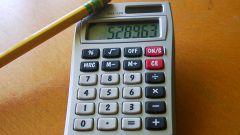Instruction
1
Make a list of bets for taxes. In the calculation of the tax burden, the following tax rates: value-added tax – 18% (Chapter 21 of the RF Tax code); profit tax – 24% (Chapter 25 of the tax code); property tax – 2,2% (Chapter 30 of the tax code); the uniform social tax – 26% (Chapter 24 of the tax code); the social insurance – 0.2% (article 226 of NK of the Russian Federation). Economists disagree on the tax to incomes of physical persons, on the one hand the company pays it, and on the other it is withheld from employee wages. Made for the most part personal income tax do not include in the calculation of the tax burden.
2
Determine the income from the sale of goods, performing works or rendering services, which was received by the company during the reporting period. Also calculate the amount of nerealizovannyi of income derived from other income. These indicators can be taken from Annex 1 to Sheet 02 of the tax Declaration for the reporting period.
3
Calculate the tax burden, which is equal to the ratio of the amount of tax payments to the sum of revenues from sales and nerealizovannyi income. This figure is in percent, so multiply the obtained value by 100%. The result is a tax burden which characterizes nalogoplatel of the goods, works or services, but does not include changes in the tax structure.
4
Calculate the relative and absolute tax burden, which will allow to see a clear picture of the tax burden of the enterprise. Define first the absolute indicator, which is equal to the sum of tax payments, payments to extra-budgetary funds and tax arrears.
5
Next, add up the sales proceeds and nerealizovannyi income and subtract from the sum of material costs, depreciation and nerealizovannyi costs to receive newly created value. Calculate the relative tax burden, which is equal to the ratio of the absolute indicator to the newly created value in terms of percentage.


